#duoro
Explore tagged Tumblr posts
Text

Valley of the Duoro river in Portugal
Portuguese vintage postcard
#duoro#carte postale#sepia#portugal#valley#river#photo#postkarte#tarjeta#ansichtskarte#postkaart#ephemera#postcard#vintage#portuguese#historic#postal#briefkaart#photography
3 notes
·
View notes
Text


Duoro Valley Boat Cruise (2024) - Ricoh GRiii
0 notes
Text
youtube
The Dom Luis I bridge in the city of Porto - Portugal.
In the wonderful city of Porto the famous Luis I Bridge is located pretty much in the centre of Porto (Unesco World Heritage Site). Video shot in March 2022 by WonderJourneys Music by: Scott Buckley - Castle In The Sky
Enjoy the anime / ghibli vibe of the scenery.
Some background: In 1879, Gustave Eiffel presented a project to construct a new bridge over the Douro, with a high single deck in order to facilitate ship navigation. This project was rejected due to dramatic growth of the urban population, which required a re-thinking of the limits of a single-deck platform.
A competition was initiated in November 1880, in order to construct a double-deck metal bridge, which included projects by Compagnie de Fives-Lille, Cail & C., Schneider & Co., Gustave Eiffel, Lecoq & Co., Société de Braine-le-Comte, Société des Batignolles (which submitted two ideas), Andrew Handyside & Co., Société de Construction de Willebroek (also two projects) and John Dixon. It was in January of the following year that deliberations by the committee supported the project of Société de Willebroek and provided better-carrying capacity.
On 21 November 1881, the public work was awarded to the Belgian Société de Willebroek, from Brussels, for 402 contos. It was to be administrated by Théophile Seyrig, a disciple of Gustave Eiffel and author of the project. Seyrig had worked on the D. Maria bridge with Eiffel, hence the resemblance of his new bridge to the D. Maria bridge. Construction began on the Ponte Luís I alongside the towers of an earlier railway suspension bridge, the Ponte Pênsil, which was disassembled.
By 26 May 1886, the first weight experiments began, with the transport of a 2,000 kilograms (4,400 lb) per metre. On 30 October construction of the main arch and upper deck were concluded, resulting in its inauguration the very next day.[2] On 1 November, a toll system began to operate under the administration of the winning company, that was equal to 4 reís per person. The following year the lower deck was inaugurated, completing the project. During its ceremonies, the bridge was blessed by Bishop D. Américo.
By the turn of the century (1908) electric carriages were installed in the city centre, extending to the bridge.
#porto #unesco #travel #wonderjourneys #travel #portugal #duoro #worldheritage #unesco #iphone #tourism #ghibli style vibe
#porto#unesco#travel#wonderjourneys#portugal#duoro#worldheritage#iphone#tourism#ghibli style vibe#unesco world heritage site#wonder journeys#wanderlust#walking tour#touristplace#tourist destination#Youtube
1 note
·
View note
Text
Fall Vacation Destinations
While summer vacations are a great way to enjoy the sun and heat of the summer months, fall vacations are all about a peaceful, cozy, and comforting experience. Autumn is a great time to see beautiful landscapes, interact with wildlife, and explore new outdoor destinations. As soon as I see the first leaf turn from green to yellow, I get a little obsessed with the idea of an amazing fall…

View On WordPress
#2023#blogger#canadian blogger#colorado#crete#duoro valley#fall#fall vacation destinations#filipa jackson#ideas#kyoto#mexico city#mommy#playing with apparel#playingwithapparel#scottish highlands#telluride#travel#trip#yellowknife
1 note
·
View note
Text

Marchioness of Duoro Linda Atherton (b.1952) BBC England
8 notes
·
View notes
Text




Scenery from the train as we wind our way through the Duoro Valley. Rolling country with vineyards from the edge of the river to the top of the hills! My kinda place, and you just have to love the focus. Anyone can grow radishes and potatoes! 😁
3 notes
·
View notes
Photo
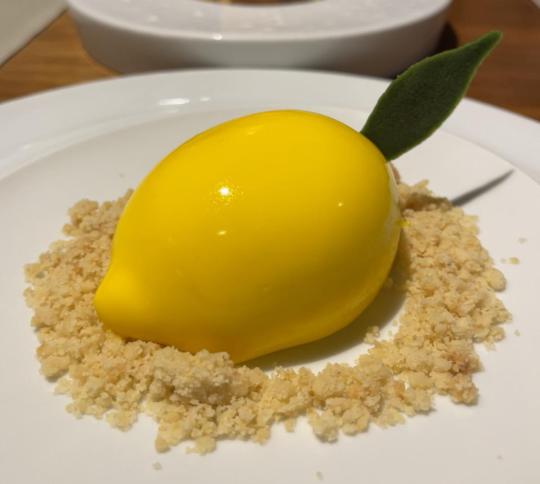
Lemon custard dessert called “not a lemon” in Duoro Valley, Portugal Source: https://reddit.com/r/foodporn
http://foodmyheart.tumblr.com | https://campsite.bio/foodmyheart
42 notes
·
View notes
Text
Day 1 Lisbon in 32,729 steps
Oh my! I am feeling weary after a big day of walking. I slow climbed into a hot bath when I returned at about 8.30pm.
The weather was not as cool as I anticipated, a lovely high of 17° and only a little sprinkle of rain at around 5pm.
I started the day at the hotel buffet and had my first Pastel de nata. It actually tasted quite good, but I do understand why the one I had later in the day at Manteigaria was award winning. It was served warm and the pastry was lighter and the filling creamier. It may have helped that I purchased a shot of Espinheira with it (it was basically "I'll have what she's having"!)
I first walked to the glamorous El Corte Inglés department store to see what the fuss might be about. I ended up using the WC and buying a bottle of water! I'm thinking the summer sales will be on when I return to Lisbon at the end of May and my suitcase might be a bit lighter.
I then headed up and down a few hills to a recommended cafe, Comoba, for a local latte (galão) before moving onto lunch at Time Out Market Lisboa for lunch. The codfish croquette was recommended at Croqueteria. It was the tastier of the three I had (cuttlefish with squid ink and tuna were the other two), with a side of sweet potato crisps, creamed spinach and a glass of rose for €12. I met Mary and Elaine from Kentucky (now retired, but former work colleagues) who were sitting beside me also trying to work out the process for ordering. They are on a short trip, river cruise up the Duoro River to Salamanca, Spain and return. Elaine totally got me when I mentioned my "gap" years, particularly the one sans men. And they reported they were very happily retired (although Elaine did say she was volunteering for 15 hours per week). They seemed to also keep themselves occupied with several short overseas holidays.
For the afternoon I'd pre-booked the 2.5+ hour Sandemans New Europe walking tour with Nuno (originally from the north of Portugal, he moved to Lisbon in 2012 to pursue acting). The itinerary included the central district of Bairro Alto and a visit to the oldest bookstore in the world (Bertrand), several cool views of Lisbon, including from the Santa Justa Elevator, a history lesson on the Great Earthquake of 1755 and the intriguing story of the peaceful Carnation Revolution and the end of the dictatorship on 24th April 1974 and lots of food recommendations.
I ended the evening with dinner at Sebastião, pre-booked on the Fork app. I ate a whole roasted octopus (the waiter assured me it was ok to eat everything) with sautéed turnip tops and sweet potato. It was a large meal and quite tasty (aside from a couple of gritty bits), served with a lovely glass of red he recommended that wasn't on the menu. The waiter also gave me a very basic Portugese language lesson, apparently it's mostly a nasal language and the words I have been using are all a bit wrong. Bring on those classes this week in Alvor.
My favourite human contact today was with Mary and Elaine from Kentucky.
Best food - definitely the Pastel de Nata at Confeitaria da Gloria.
Best beverage - the latte at Comoba.
Most interesting story - the Carnation Revolution and how recent that really was and Nuno's perspective that over the past 10 years "Portugal" is acknowledging and taking responsibility for all the wrong doings from the past and changing the language to describe this, eg instead of "slave trading" saying "human trafficking".
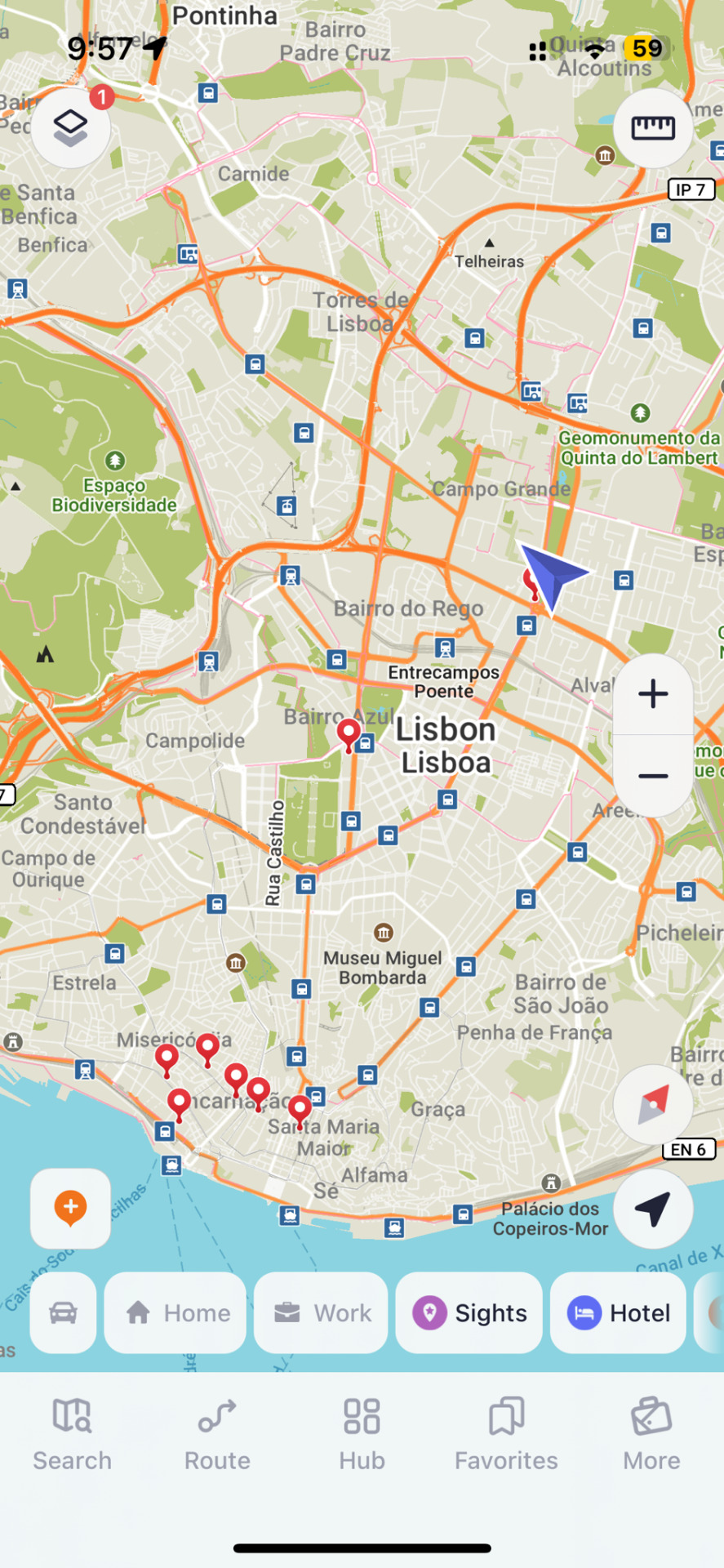


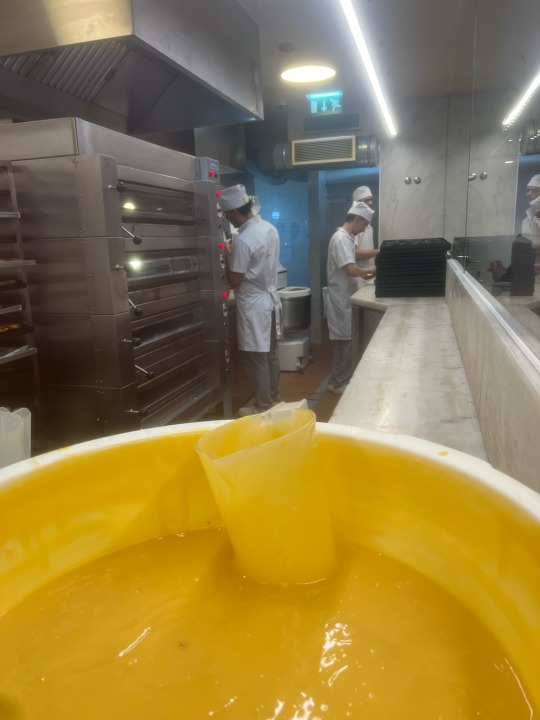



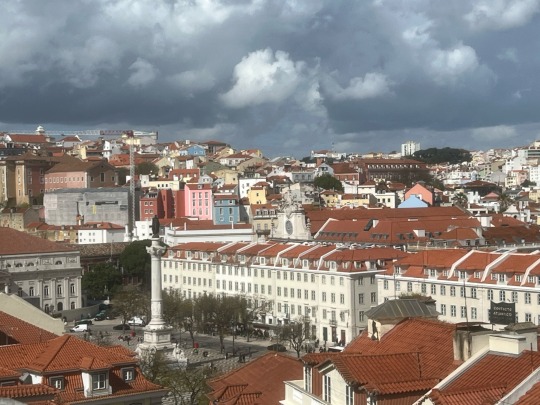


3 notes
·
View notes
Photo
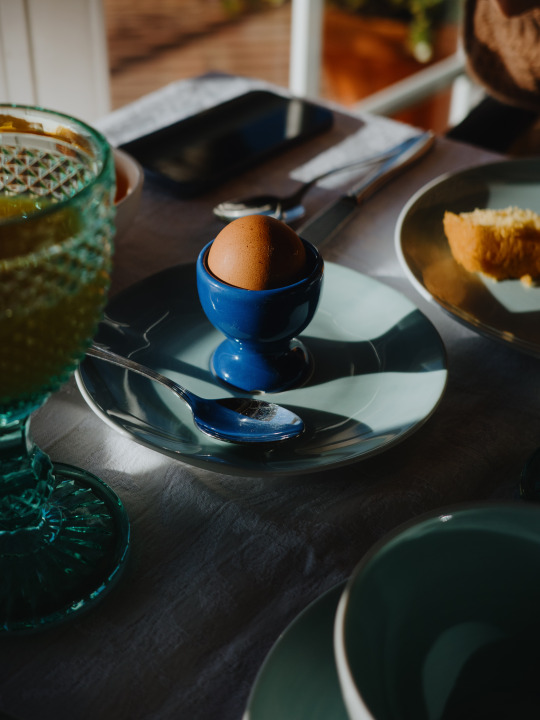
Egg in the Duoro Valley, Portugal.
4 notes
·
View notes
Text

Porto or Lisbon - which one is better?
Today I bring you some basic information about these two cities in order to help you choose. Let's go!
Lisbon:
- You need around 3 days to explore the city and a couple of days more if you want to explore the places in the surroundings like Sintra, Óbidos or Cascais.
You need to use public transport/car to get to certain parts of the city because the distances can be long.
- The beaches near Lisbon have warmer
waters for swimming, especially in August and
September.
- Algarve, the part of Portugal famous for its beaches, is close to Lisbon.
Porto:
- Unlike Lisbon, in Porto all the main sights are within easy walking distance, so you don't need to use public transport/car.
- You can see Porto easily in 2 or 3 days.
- The beaches near Porto are huge and the
water in the ocean is cold, even in the summer. - From Porto you can visit Duoro Valley with its picturesque towns and discover some of the best wineries in the country.
Personally, the first time I visited Portugal, I enjoyed Porto more because Lisbon seemed big and chaotic, but during my second trip to Lisbon last spring, I completely fell in love with it. I hope the information above helps you to make up your mind if you can only visit one of them, but I definitely recommend exploring both because they have so much to offer!
Have you been to either of these cities? And if you have visited both, which one was your favourite?
Subscribe to my YouTube channel.
#portugal#traveling#traveling tips#lisbon#sintra#travelfashiondairy#exploring#travelers#travel#travelblogger
2 notes
·
View notes
Photo

Raúl Peréz & Niepoort “Ultreia” - Duoro 2013 - Chef Ricardo Takes Over - Terroir - 6 December 2022 https://www.instagram.com/p/CpAPkwDL9gE/?igshid=NGJjMDIxMWI=
2 notes
·
View notes
Text

Bridge (2024) - Ricoh GRiii
0 notes
Text
youtube
Take a relaxing stroll across Dom Luis I Bridge in the wonderful city of Porto, Portugal.
In the wonderful city of Porto the famous Luis I Bridge is located pretty much in the centre of Porto (Unesco World Heritage Site). Video shot in March 2022 by WonderJourneys
#porto #wonderjourneys #travel #portugal #duoro #worldheritage
Some background: In 1879, Gustave Eiffel presented a project to construct a new bridge over the Douro, with a high single deck in order to facilitate ship navigation. This project was rejected due to dramatic growth of the urban population, which required a re-thinking of the limits of a single-deck platform. A competition was initiated in November 1880, in order to construct a double-deck metal bridge, which included projects by Compagnie de Fives-Lille, Cail & C., Schneider & Co., Gustave Eiffel, Lecoq & Co., Société de Braine-le-Comte, Société des Batignolles (which submitted two ideas), Andrew Handyside & Co., Société de Construction de Willebroek (also two projects) and John Dixon. It was to be administrated by Théophile Seyrig, a disciple of Gustave Eiffel and author of the project. Seyrig had worked on the D. Maria bridge with Eiffel, hence the resemblance of his new bridge to the D. Maria bridge.
#porto#portugal#wonder journeys#wonder#wonderjourneys#travel europe#travel#unesco#unescoworldheritage#europe#architecture#duoro#Youtube
1 note
·
View note
Text

Port Şarabı
✍🏻 Edip Kemal Eren
Port şarapları güney Portekiz’in Douro vadisinde yapılan kuvvetlendirilmiş şaraplardır. Bu şaraplar isimlerini Portekiz sözcüğü olan Porto şehrinden almıştır. Yerliler Port-Town sözcüğünü kısaltarak “O Porto” şeklinde söylerler.
Port şarapları Upper Douro vadisinde nehir ve İspanyol sınırları arasında üretilmektedir. Bu ülke dağlık olduğu için nehirler dağlardaki küçük sulardan birikerek oluşur.
Porto şehrinden geçen nehrin kıyısında ve Vila Novadi Gaia şehrinin karşısında yerleşmiştir. Port şarapları Duoro vadisindeki üzüm bağlarında yetişen üzüm bağlarından yapılır. 1986’ya kadar kanunlara göre Porto şarapları yüklenene kadar Vila Nova di Gaia’da olgunlaşması için bekletilirdi. Üzümler Vila Nova di Gaia’da saklanmaksızın doğrudan büyük üretici ve alıcılara iletilebilmesi için bu kanun sonradan değiştirilmiştir.
Duora nehrinin kıyısındaki dağlık ve dik yerler üzüm yetiştirmeye olanak sağlar. Bu yerlerde devamlı iş yaratılır. Özellikle kış yağmurları vadinin toprakların kendisiyle akıtır gider.
PORT ŞARABI İÇİN ÜZÜMLER
Port şarapları değişik kırmızı beyaz üzüm çeşitlerinin karışımından yapılır. Bununla birlikte, sadece elle toplanan üzümler Port şarabının üretiminde kullanılması tavsiye edilir. Bunlar aşağıdakilerdir:
Kırmızı Üzüm Çeşitleri Beyaz Üzüm Çeşitleri
Bastardo
Cornifesto
Dinzelinho Tinto
Malvasiya Preta
Mourisco Tinto
Tinta Amerela
Tinto Cao
Tinta Borroca
Tinta Roriz
Touriga Francesca
Touriga Nacional
Arinto
Boal
Dinzelinho
Folgosao
Malvasia Fina
Malvasia Rei
Moscatel Galego
Rabigato
Sercial
Verdelho
PORT ŞARABININ ÜRETİMİ
Üzümün geleneksel ayak basılarak ezilmesi oldukça yorucu ve zor bir süreçtir ve yoğun çalışmayı gerektirir. Yalınayak basarak üzümleri ezenler lagar denilen ezmek için kullanılan kutulara üzümleri koyarak ezerler. Bunun gibi günümüzde sıhhi modern teknik ve makineler kullanılarak daha verimli bir şekilde kolaylıkla başarılmaktadır. Buna karşın en iyi port şarapları olarak geleneksel usulle ayak ile basılıp ezilerek üretilen şaraplar sayılır.
Ayakla basarak ezenlerin vucüt sıcaklığı veya rogador’lar tarafından meydana gelen sıcaklık fermentasyon oranını yükseltir. Üzüm suyu güçlü bir şekilde fermentleşmeye başlayınca iyi bir şekilde karıştırmaya başlar.
Port şarabının fermentasyonunun başlangıç aşaması diğer doğal kırmızı şaraplardan farklıdır. Çünkü fermentasyon dereceleri 32° C ye kadar şaraba zararlı etkileri vermeyerek yükselebilir. Geleneksel olarak Port şarabı için üzümler onların kabuklarının yardımıyla fermentlenebilir. Çünkü bu üzümlerin çoğunluğu koyu ve kırmızı renkli üzüm çeşitleridir ve Port şarap üretiminde bunlar kullanılır.
Sherry’lerden farklı olarak white port’lar beyaz üzüm çeşitlerinden yapılır ve onlar da kabuk yardımıyla fermentlenir.
Fermenttelmiş üzüm suyu devamlı olarak gözlemlenir ve yeterli renk ve istenilen şeker düzeyine ulaştığı zaman üzüm suyu varillere koyulur. Bu variller fermentasyon sürecini durduran ölçülmüş aguagdiente miktarını içerir. Kuvvetlendirilmiş ve yüksek şeker düzeyi sağlanmış tada sahip elde edilen şarap olgunlaşmaya bırakılır.
PORT ŞARABININ ÇEŞİTLERİ
Port şarabının farklı çeşitleri vardır. Bunlar aşağıdakilerdir:
Vintage Port : ( Single Quinta Ports, Garrafeira Ports, Dated or Colheita Ports )
Late Bottled Vintage Port
Ports With an indication of age
Vintage Characters,style or reserve
Ruby Ports
Tawny Ports
White Ports
Crusted Ports
1. Vintage Port : Bu port şarabı tek hasattan yapılan şarapların karışımından elde edilir. Şaraplar yapıldıktan ve Vila Nova di Gaia’ya gönderildikten sonra bu şaraplar aynı vintage şaraplarla karıştırılabilir. Bu şaraplar devamlı olarak tadılır ve değerlendirilir, eğer şaraplar yüksek kaliteye sahip ise o zaman üreticiler şarabın vintage olduğuna karar verirler. Bu şaraplar Vintage Port olarak şişelenir ve şişesinde üretilen tarih yazılır. Bu işlem hasattan sonra 2-3 yıl arasında yapılmalıdır.
Üreticiler seçilmiş şarapların örneklerini Port Wine enstitüsüne tat alma ve örnekleme için gönderirler. Üreticilerin ne kadar Vintage Port o yıl için üretmeyi amaçladığı ile ilgili bilgiler enstitüde analiz edilir. Bu yeni kırmızı port şarapları yıla göre kendilerinin önceki koyu renklerini kaybederek belirli ölçüdeki çökeltileri atılır. Bu gibi port şarapları ağır çökeltilere sahiptir ve bundan dolayı çökeltiler elle dikkatlice toplanmalı ve sunulmadan önce filtreden geçirilmelidir.
Single Quinta Ports : Portekiz kelimesi olan ‘Quinta’ sözcüğü çiftlik ve mülkiyet anlamına gelir ama burada üzüm bağı olarak kullanılmaktadır. Single Quinta Port şarapları bir yıllık üzümden yapılmış şaraplardır ve bundan dolayı bu şaraplara bir yıllık şaraplar denir. Bu Single Quinta Port şarapları birçok çökeltileri atılarak 2-3 yıl sonra şişelenir.Bu şaraplar sunulmadan önce filtreden geçirilmelidir.
Garrafeira Ports : ‘Garrafeira’ sözcüğü kaliteli şarapların etiketine göre üreticiler tarafından ‘merchant’s pride’ adı altında kullanılır. Bu şaraplar özel olarak bir baş bölgelerden seçilir fakat bunlar her zaman bir yıllıktır ve bundan dolayı bazı bölgelerin iyi şaraplarıyla karıştırılır. Karıştırıldıktan sonra, bu şaraplar şişelenmeden önce uzun dönem (10-15 yıl) içinde olgunlaşır. Bu şaraplar Portekiz dışında seyrek görülür. Çünkü bunların çoğunluğu yerliler tarafından tüketilir.
Dated Or Colheita Ports : Portekizce’de Colheita sözcüğü bir yıllık ürün anlamına gelir. Dated or Colheita port şarapları vintage yıllık şaraplarından biraz farklıdır ve bunlar şişelenmeden önce en az 7 yıl ağaç kutularında saklanmalıdır. Ancak bazı üreticiler bu şarapları yukarıdaki süreden daha fazla saklar ve bu şaraplar sırasıyla ancak bu işlemden sonra şişelenir.
2. Late Bottled Vintage Ports : LBV Port şarapları olarak da tanımlanan bu şaraplar iyi kaliteli yıllık şaraplarından içilen tek yıllık port şaraplarıdır. Bu şaraplar bazen yıllık kaliteli şaraplar olarak açıklanır, ama önceden böyle değildi. Bu şaraplar genellikle en az 4 yıl varillerde saklanır ve 6. yılına kadar şişelenmelidir. Bazı üreticiler kendi şaraplarını erken şişeleyebilir ve böylece bu şaraplar saklanmaya devam edilerek bir çok çökeltileri atılabilir ve sunulduğu zaman filtrelemeyi gerektirir. Bu şişede saklanan LBV Port şarapları Vintage port şaraplarına benzer ve fazla pahalı olmaması avantajlı taraftır. Ancak 5. ve 6. yıl içinde şişelenen bu LBV Port şarapları varildeki birçok tortusunu atar. Bunlar normal olarak solgun renklidir ve fazla saklanmayı gerektirmeyen hemen içmeye hazır olmasını sağlayan Oporto’to da şişelenir.
3. Ports With An Inducation Of Age : En iyi Ruby Port şarapları uzun dönemli olarak şişelenebilir ve aşağıdaki göstergelere göre etiketlenir: 10 yıllık, 20 yıllık, 30 yıllık, 40 yıllık. Bu şaraplar olgunlaşmayla yukarıdaki yıllara ulaşmamıştır. Bu şaraplar 10, 20, 30, 40 yıllık şarapların basit karışımıdır. Şişelenme tarihi ve şarabın ağaç kutularda olgunlaşması hakkındaki durum genellikle port şaraplarının etiket çeşitlerinde gösterilir.
4. Vintage Character, Style Or Reserve Ports :Bunlar üst derecedeki Ruby Port şaraplarıdır. Bunlar vintage character port şarapları gibi ağaç kutularda 5 veya daha fazla bekletilen, farklı üzüm çeşitlerinin karışımına göre etiketlenir. Son karışım şişelenmeden önce filtrelenir ve bundan dolayı sunulmadan önce filtrelemeyi gerektirmez.
5. Ruby Ports : Ruby Port şarapları iki veya üç farklı yıllık şarapların yaklaşık 3-5 yıla kadar ağaç kutularında saklanan Ruby renkli şarapların karışmış şeklidir. Bu şaraplar şişelenmeden önce filterlenir ve bunun için sunulmasından önce filitrelemeyi gerektirmez. Şişelendikten sonra hemen içmeye hazır olarak bu şaraplar fazla saklanmadan geliştirilir.
Eski Ruby Port şarapları birkaç yıllık şaraplarla karıştırılır ve 7 yıl içinde olgunlaşır. Bu şaraplar en fazla 10 yıl içinde olgunlaşarak ve devamlı kendi rengini kaybederek Fine Old Tawny Port şarapları olarak ortaya çıkar.
6. Tawny Ports : “Yeni” Tawny Port şarapları en az 5 yıl varillerde saklanan yeni kırmızı veya beyaz port şarapları ile karıştırılır. Fine Old Tawny Port şarapları genel olarak 10-20 ve daha fazla yıl saklanan Ruby Port şaraplarıdır ve bu süreç içinde şaraplar devamlı olarak güçlendirilir. Bu şarabın renginin kaybetmesine yani yakut renginden kehribar rengine dönüşmesine neden olur.
7. White Ports : Port şarabının bu seyrek çeşidi kırmızı üzümden yapılan şarap gibi beyaz üzümden yapılır. Yani kabukların yardımıyla fermentlenir fakat sonuç olarak kırmızı şaraba göre rengi altın renklidir.
White Port şarabın küçük miktarı hafif dry stilde yapıldığı halde bunların çoğunluğu tatlıdır. Tatlı şarap stilinde çok tatlı olarak yapılıp Lacrima, Lacrima Cristi, Lacrima Sancta ve Lacrima Divina gibi sık sık etiketlenir.
8. Crusted Ports : İki veya daha fazla yıllık ve bir yıllık yüksek kaliteli Port şaraplarının karışımından türetilir. Bu şaraplar yaklaşık 3-4 yılda şişelenir ve bunlar yeni olarak şişelendiğinden Vintage Port şarabındaki çöküntülerin miktarı gibi bunun çökeltileri de atılmalıdır. Crusted Port şarapları Crusting Port şarapları olarak da bilinir.
BÜYÜK PORT ŞARAP EVLERİ
Port şarap evlerinin çoğunluğu uzun süreli ilişkileri sayesinde İngiliz firmalarıdır:
Cockburns
Croft
Delaforce
Dow & Co.
Fonseca
Grahams
Offley Forrester
Sandeman
Taylor, Fladgate &Yeatman
Warre & Co.
DECANTE ve SUNULMASI
Fazla bekletilmeden şişelenen veya şişelenmeden önce filitrelenmeyen Port şarapları şişelendiği zaman ağır çökeltileri atılır. Vintage ve Crusted Port şarapları buna iki örnektir. Bununla birlikte port şarapları çok koyu renkli şişelerdeki diğer kırmızı şaraplar gibi decante edilmez. Çünkü, decante sürecinde çökültüleri görebilmek için kişisel decante’ye yol verilmez.
Decante şarap decante şişeye göre orijinal şişeye geri koyulduğu zaman şişeler çalkanır ve servis için decante edilen Port şarabı tekrar çalkalanarak şişeye koyulur. Port şarapları “Port Wine Glass” larını tümüyle doldurulması yerine kırmızı şarap bardaklarına kısmen doldurularak servise sunulur.
Decante : Şarabı şişesinden başka bir kaba koyarak tortusundan arındırmak.
Edip Kemal Eren
Not: Sosyal medya hesaplarımdan bana ulaşabilirsiniz.
0 notes
Text


After a day and a half of enjoying Porto, we’ve packed and are ready to begin our Camino tomorrow. We stayed near the Douro river and today we crossed it on the Ponte Luis I and enjoyed beautiful views of the city while relaxing for a concert in the park. This evening we experienced Fado for the first time. This traditional Portuguese music has classical guitar, Portuguese guitar and singing, and is enjoyed with a glass of port. We’ve had wonderful Portuguese cuisine including sardines and hake.
Después de un día y media de disfrutar Porto, hemos empaquetado y estamos listos para empezar nuestro Camino mañana. Nos quedamos cerca del Río Duoro y hoy lo cruzamos en el Ponte Luis I y disfrutamos vistas hermosas de la ciudad mientras relajando por un concierto en el parque. Esta noche sentimos Fado para la primera vez. Esta música tradicional portuguesa tiene la guitarra clásica, la guitarra portuguesa y canciones, y se disfruta con una copa de Port. Habíamos tenido comida portuguesa maravillosa incluyendo sardinas y merluza.
1 note
·
View note
